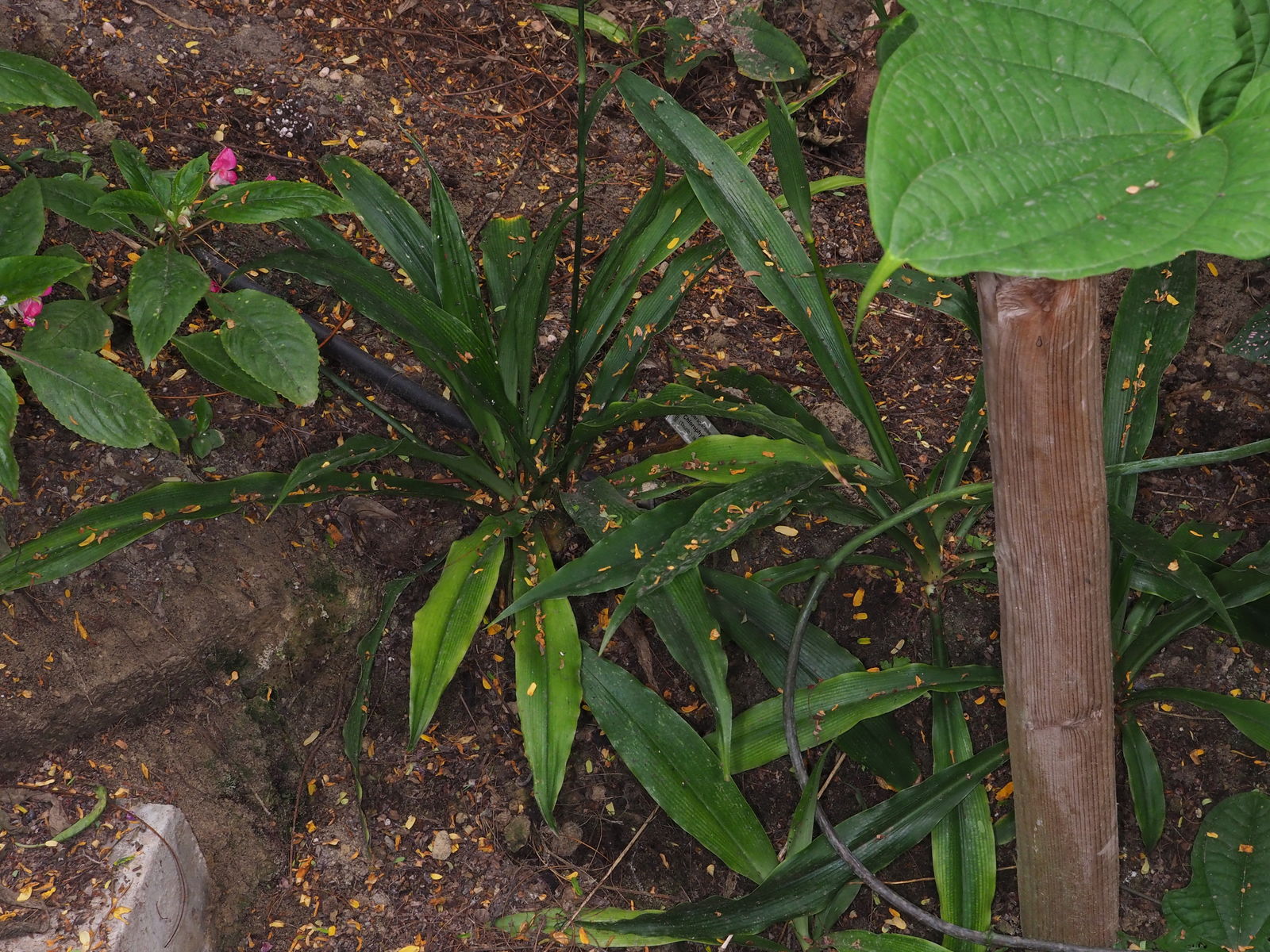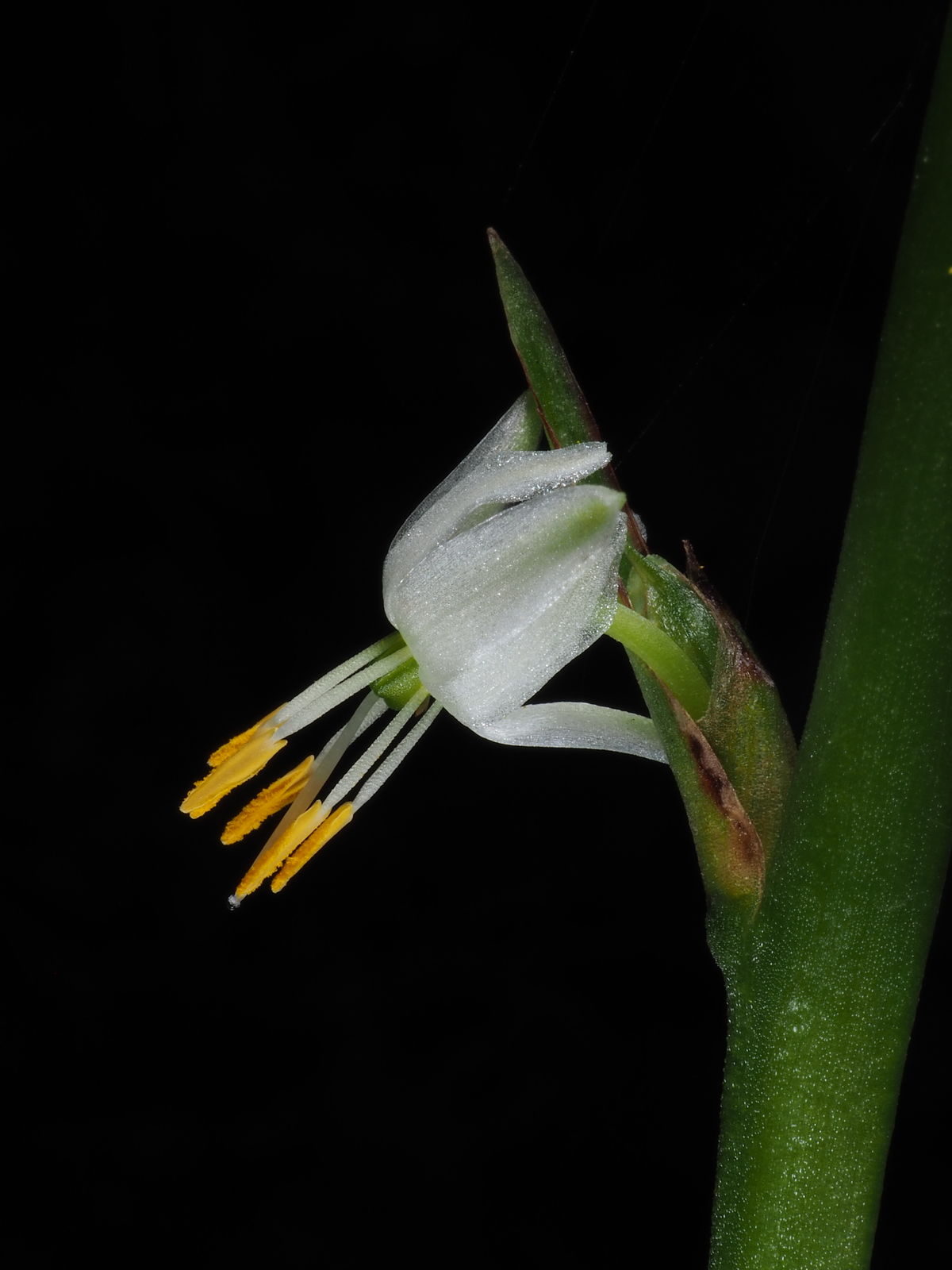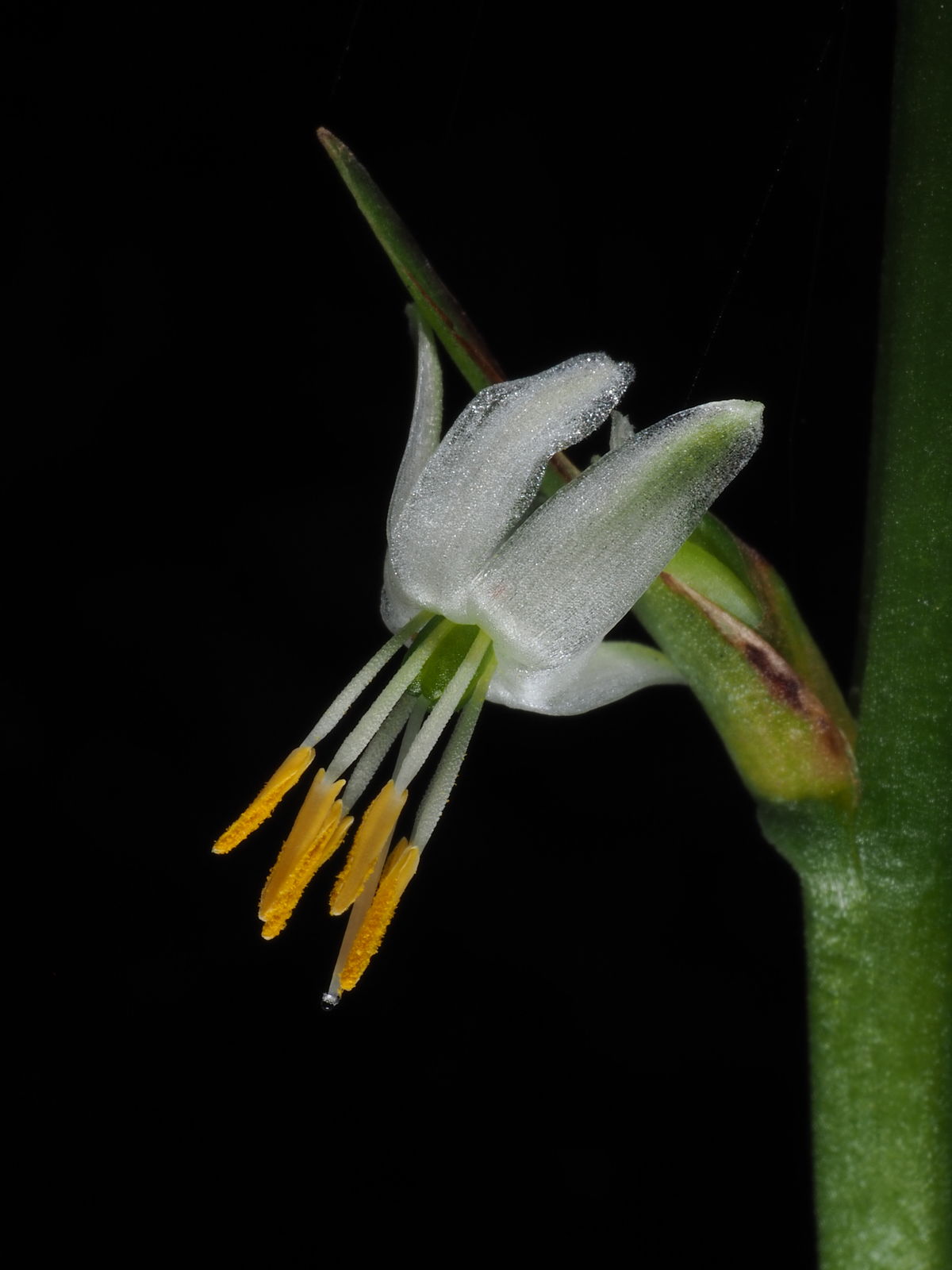Family: Asparagaceae
Author: (Thunb.) Jacques
Bibliography: J. Soc. Imp. Centr. Hort. 8: 345 (1862)
Year: 1862
Status: accepted
Rank: species
Genus: Chlorophytum
Vegetable: False
Observations: W. Trop. Africa to Cameroon, Ethiopia to S. Africa
Description
The Ribbonplant, scientifically known as Chlorophytum comosum, is a popular and resilient houseplant belonging to the Asparagaceae family. Celebrated for its graceful, arching leaves and ease of care, this plant has earned a place in homes and offices around the world.
Botanical Description:
The Ribbonplant exhibits narrow, strap-like leaves that are typically green, but often come variegated with white or yellow stripes, adding to their visual appeal. The leaves grow in a rosette pattern and can reach lengths of up to 45 centimeters. Its cascading growth habit makes it ideal for hanging baskets, where its foliage can drape beautifully.
Flowering and Reproduction:
One of the most charming aspects of the Ribbonplant is its reproductive strategy. It produces small, white, star-shaped flowers on long stems. These flowers are not particularly showy but give way to plantlets, or “pups,” which resemble miniature versions of the parent plant. These pups can easily be propagated to produce new plants, making Chlorophytum comosum a wonderful choice for novice gardeners.
Habitat and Distribution:
Native to the Western Tropical regions of Africa extending to Cameroon, and from Ethiopia to South Africa, the Ribbonplant thrives in a variety of environments. It has adapted well to indoor conditions, where it prefers indirect sunlight and well-draining soil. In its native habitat, it is accustomed to varying levels of light and moisture, which speaks to its hardiness and adaptability as a houseplant.
Cultural Significance and Uses:
Besides its aesthetic appeal, the Ribbonplant is also valued for its air-purifying properties. Studies by NASA have demonstrated its effectiveness in removing indoor pollutants such as formaldehyde and xylene, thus contributing to a healthier living environment. Its ease of growth and natural beauty have made it a beloved feature in both residential and commercial spaces.
Care and Maintenance:
The Ribbonplant is known for its low-maintenance needs, making it a perfect choice for busy individuals or those new to plant care. It thrives in well-lit environments but can tolerate lower light conditions. Watering should be moderate; let the soil dry out between watering to prevent root rot. It is generally pest-resistant, though it can occasionally attract spider mites or aphids.
In conclusion, the Ribbonplant, Chlorophytum comosum, combines beauty, versatility, and health benefits, making it a standout choice for both novice and experienced gardeners. Its natural grace, coupled with its air-purifying qualities, ensures that it remains a favorite in both indoor and outdoor garden settings.
Common Names
Eng: spider plant, ribbonplant, spider-ivy, spiderplant, spider-plant
Swe: ampellilja
Por: clorofito, gravatinha
En: Ribbonplant, Spider-ivy, Spiderplant, Spider plant, Hen-and-chickens, Spider-plant
Af: Hen-met-kuikens
Ar: غيلان واحف
Zh: 吊兰
Cs: Zelenec chocholatý
Da: Væddeløber
Et: Tups-rohtliilia
Fi: Kirjorönsylilja
Fr: Herbe vaudoise, Phalangère
De: Grünlilie
Hu: Csüngő csokrosinda
Id: Tanaman
Fa: گیاه عنکبوتی
Pl: Zielistka Sternberga
Pt: Clorofito, Gravatinha
Ro: Planta-păianjen
Ru: Хлорофитум хохлатый
Sk: Zelenec chochlatý
Es: Cinta
Sv: Ampellilja
Zh-tw: 吊蘭
Th: เศรษฐีเรือนนอก
Zh-hant: 吊蘭
Uk: Хлорофітум хохлатий
Synonyms
- Chlorophytum sternbergianum ((Schult. & Schult.f.) Steud.)
- Chlorophytum nemorosum (Poelln.)
- Phalangium comosum ((Thunb.) Poir.)
- Chlorophytum rugosum (Poelln.)
- Chlorophytum glaucidulum var. pauper (Poelln.)
- Anthericum comosum (Thunb.)
- Chlorophytum gazense (Rendle)
- Chlorophytum elatulum (Poelln.)
- Chlorophytum bukobense var. kilimandscharicum (Engl.)
- Anthericum vittatum (Anon.)
- Anthericum sternbergianum (Schult. & Schult.f.)
- Chlorophytum glaucidulum (Engl. ex Poelln.)
- Phalangium viviparum (Reinw. ex Kunth)
- Cordyline vivipara (Steud.)
- Chlorophytum turritum (Peter ex Poelln.)
- Chlorophytum inopinum (Poelln.)
- Anthericum vittatum variegatum (Hovey)
- Narthecium sarmentosum (Philippar)
- Anthericum williamsii (Anon.)
- Chlorophytum ramiferum (Rendle)
- Anthericum vallis-trappii (Poelln.)
- Chlorophytum miserum (Rendle)
- Hartwegia comosa ((Thunb.) Nees)
- Chlorophytum paludicola (Poelln.)
- Chlorophytum longum (Poelln.)
- Anthericum picturatum (Dreer)
- Hollia comosa ((Thunb.) Heynh.)
- Chlorophytum delagoense (Baker)
- Chlorophytum elgonense (Bullock)
- Caesia comosa ((Thunb.) Spreng.)
- Chlorophytum usambarense (Engl. ex Poelln.)
- Chlorophytum brevipes (Baker)
- Anthericum longituberosum (Poelln.)
- Chlorophytum burchellii (Baker)
- Chlorophytum bukobense (Engl.)
- Chlorophytum kirkii (Baker)
- Chlorophytum magnum (Peter ex Poelln.)
- Chlorophytum limurense (Rendle)
Distribution
- Burundi (native)
- Cameroon (native)
- Cape Provinces (native)
- Equatorial Guinea (native)
- Ethiopia (native)
- Gulf of Guinea Is. (native)
- Ivory Coast (native)
- Kenya (native)
- KwaZulu-Natal (native)
- Liberia (native)
- Malawi (native)
- Mozambique (native)
- Nigeria (native)
- Northern Provinces (native)
- Sierra Leone (native)
- Sudan (native)
- Swaziland (native)
- Tanzania (native)
- Uganda (native)
- Zambia (native)
- Zimbabwe (native)
- Andaman Is. (introduced)
- Bangladesh (introduced)
- Ecuador (introduced)
- Gabon (introduced)
- Juan Fernández Is. (introduced)
- Korea (introduced)
- Madeira (introduced)
- Marianas (introduced)
- Mauritius (introduced)
- Nauru (introduced)
- New South Wales (introduced)
- New Zealand North (introduced)
- Norfolk Is. (introduced)
- Réunion (introduced)
- Seychelles (introduced)
- St.Helena (introduced)
- Tristan da Cunha (introduced)
- Tunisia (introduced)
- Western Australia (introduced)
Additional Images
Other
Taken Feb 9, 2020 by Max B (cc-by-sa)
Taken Sep 26, 2021 by Maggie (cc-by-sa)
Taken Apr 18, 2022 by tigroo (cc-by-sa)
Taken May 3, 2017 by Rémi Knaff (cc-by-sa)
Taken Dec 28, 2021 by John Lööf Green (cc-by-sa)
Leaf
Taken Mar 7, 2018 by Fejul Xeto (cc-by-sa)
Taken Jun 6, 2021 by cawa72 (cc-by-sa)
Taken Nov 5, 2017 by jose (cc-by-sa)
Taken Nov 5, 2017 by jose (cc-by-sa)
Taken Jul 5, 2020 by Luiz Jorge (cc-by-sa)
Flower
Taken Mar 13, 2018 by Fejul Xeto (cc-by-sa)
Taken Jan 29, 2020 by Palavecino Julián Ezequiel (cc-by-sa)
Taken Dec 3, 2020 by Gavieiro Zahira (cc-by-sa)
Taken May 2, 2019 by Michela (cc-by-sa)
Taken Nov 24, 2019 by Mélanie Andreetti (cc-by-sa)
Habit
Taken Oct 10, 2022 by Nathalie Potel (cc-by-sa)
Taken Dec 1, 2019 by jahani Eisa (cc-by-sa)
Taken Nov 22, 2019 by Vishnuvenkatesh Vishnuvenkatesh Dhage (cc-by-sa)
Taken Oct 29, 2021 by معلومات فلاحية (cc-by-sa)
Taken Jun 7, 2019 by elpaca (cc-by-sa)
Fruit
Taken Oct 7, 2022 by vitaly ivanov (cc-by-sa)
Taken Aug 14, 2020 by Vilaseca Juan Iu (cc-by-sa)
Taken Feb 19, 2022 by Fatiha Zaoui (cc-by-sa)
Taken Oct 24, 2022 by Tristan Jaton-Maria (cc-by-sa)
Bark
Taken May 4, 2017 by Rémi Knaff (cc-by-sa)
Taken May 4, 2017 by Rémi Knaff (cc-by-sa)
Taken May 4, 2017 by Rémi Knaff (cc-by-sa)
Taken May 4, 2017 by Rémi Knaff (cc-by-sa)
Taken May 4, 2017 by Rémi Knaff (cc-by-sa)

© copyright of the Board of Trustees of the Royal Botanic Gardens, Kew.

© copyright of the Board of Trustees of the Royal Botanic Gardens, Kew.

© copyright of the Board of Trustees of the Royal Botanic Gardens, Kew.
Sources
- WFO (No URL)
- IPNI (No URL)
- GBIF (https://www.gbif.org/species/2774846)
- POWO (http://powo.science.kew.org/taxon/urn:lsid:ipni.org:names:532810-1)
- PlantNet (https://identify.plantnet.org/species/the-plant-list/Chlorophytum comosum (Thunb.) Jacques)
Specifications
Growth habit>: Forb/herb
Growth
Sowing: Aerial Roots/Runners are propogated
Row spacing: {‘cm’: 0}
Spread: {‘cm’: 0}





























